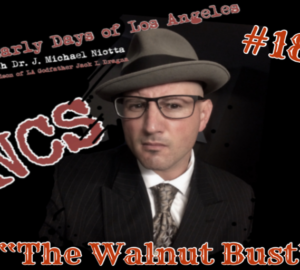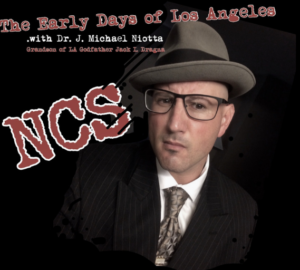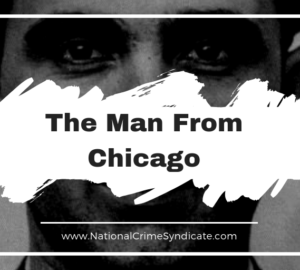9 minutes
Installment 7: The Senator and the Shield
RICO, the infamous Racketeer Influenced and Corrupt Organizations Act of 1970, is credited as one of the most effective tools in the fight against the national crime syndicate. It’s aim for the prosecution of top mob members over mere soldiers, is no doubt largely responsible for its level of success. Earlier introduced and lesser known, was another controversial legislative weapon; one which arrived on the law books not long after the end of the Second World War.
Televised, the Kefauver Hearings of the early 1950’s gave the American public a glimpse at the perceived reach and power of organized criminals. Though certainly high profile, two factors served to overshadow the weight of these proceedings: large scale focus on another enemy (Communists), and the U.S. involvement in a new foreign conflict (The Korean War). And so, for a time, the crusade of men like Estes Kefauver took a backseat to the fight overseas and the potential spies hidden among us. To the delight of crime fighters, what was originally implemented as an Anti-Communist tool during the early days of the “red scare,” would later be used to strike hard against the “gangster” problem on the home front.
The Internal Security Act of 1950, also known as the McCarran Act, attempted to keep subversives (Communist spies) out of the country and sought to expel those already embedded within the nation’s borders. But, bearing resemblance to an earlier struggle, McCarran’s bill did not have the sanction or blessing of the U.S. president. In the late nineteen-teens, President Wilson openly spoke out about prohibition, indicating it was a moral cause and that it should not be instituted as law. For this reason, Congress circumvented the president’s will by purposely instituting prohibition as an amendment rather than a law or act; presidents have no say over constitutional matters. President Wilson would not have any real influence over this decision until the coming of the National Prohibition Act, which followed a short while after the 18th Amendment took hold. Ringing somewhat similar, just over two decades later, President Truman professed that the newly proposed McCarran initiative would “jeopardize the rights of innocent persons and violate the constitution.” It wasn’t good for America and he would not support it. In each instance, the nation’s leader openly opposed then vetoed these motions. And in each case, the President of the United States was immediately thwarted by the House and Senate.
In August of 1950, journalist Doris Fleeson—noted as the first American woman to ever hold a nationally syndicated political column—indicated that “in the name of fighting Communism, the senate is preparing to pass a bill that the majority really does not want, that it realizes is a thoroughly confused, very probably unconstitutional, piece of legislation and a fraud upon the American people.” She was referring to McCarran’s anti-subversive bill. Despite public uncertainty and opposition and in spite of the president’s very vocal disapproval, Congress passed the bill. And it wasn’t long before they ran into issues.
Just a short while after the new policies took hold, newsmen began to report on the ill effects of the “hurriedly written, so-called anti-Communist law.” As the San Bernardino Sun pointed out in October of 1950, “What Congress apparently did not realize when it rushed the McCarren bill over the White House veto was that it would bar some of our best friends in Europe.” Dignitaries and politicians in negotiations with the U.S. were now being barred from obtaining the required visas to enter the country.
Some Defects in the Administration of our Immigration Laws by Jack Wasserman
“The original purpose of this provision, first incorporated into our laws during wartime, was to stay the entry of spies from our shores. The Immigration Service, however, has prevented the crossing from friendly Canada, Mexico, and South American countries, of thousands of legitimate business and social visitors under the aegis of this law merely because these individuals, in the distant past, had some associations now regarded with disfavor.”
Although instrumental in implementing the Internal Security Act of 1950, and despite the unpopular response it received, Nevada Senator Pat McCarran adamantly felt that a need for still more reform existed. His level of concern over the Communist situation would grow to such heights, that he would personally head up investigations on the administrations of both President Roosevelt and President Truman. In January of 1951, McCarran went on record criticizing the current state of immigration laws, labeling them “a mess.” His new goal, which he also announced, would be convincing Congress to “unsnarl and tighten them.” Spurring to action, McCarran’s Senate Judiciary Committee began an in depth study. And in the next year, the committee announced that the 279 page immigration bill they’d compiled would solve the country’s “problem.” The Immigration and Nationality Act of 1952, this revision of the immigration, nationality, and naturalization laws, was commonly referred to as the McCarran-Walter Act.
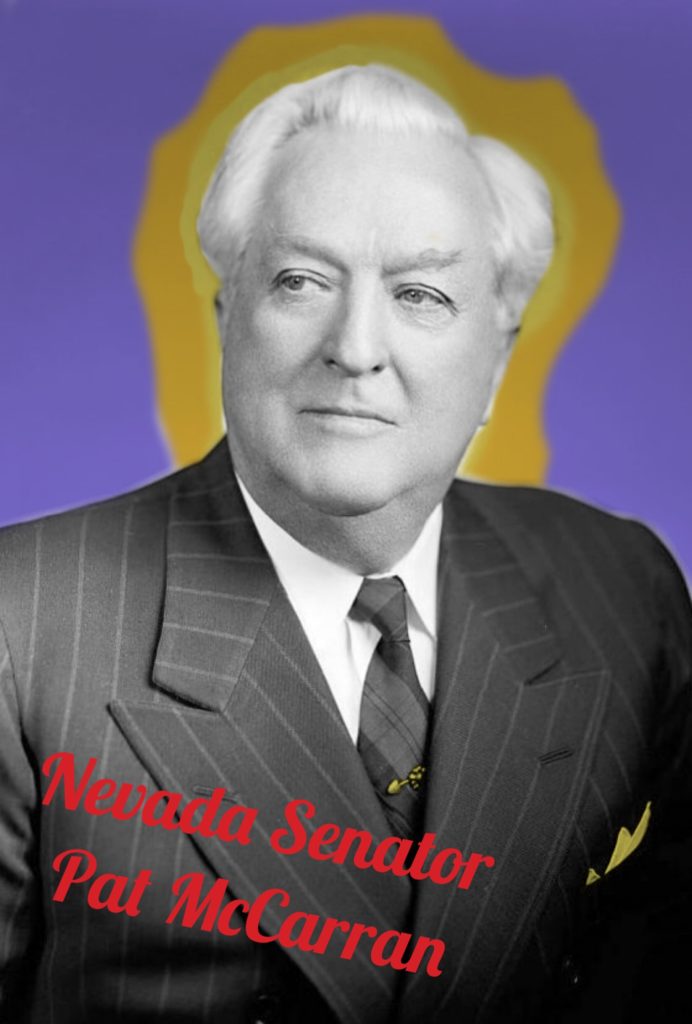
With the Korean War’s end in the summer of 1953, public focus again shifted onto the criminal element stateside. By this time, the Immigration Services consisted of a whopping 800 agents, who busied themselves with some 400,000 alien cases. A special staff had even been formed to work “closely with the FBI.” This unit employed a variety of tactics in its attempts to purge undesirables, some of which began to raise questions. One of the group’s main objectives included sifting through “racketeer files” to “see if old cases” were “now subject to action under the McCarran Act,” an approach which tip-toed awfully close to the concept of double jeopardy.
The Visa Act of 1924 stipulated that a non-citizen was allowed to stay in the country—even if they arrived illegally—if they remained a resident consecutively for three years. A clause of the McCarran Act removed this immunity, making many legal permanent residents susceptible to deportation. In addition to targeting resident aliens, the agency also went after those who’d already naturalized. Under the act, any false information discovered on naturalization paperwork—such as concealing a prior arrest—could now be used to strip the U.S. citizenship that had already been granted. Those being muscled under this byline included New York operators Meyer Lansky and Frank Costello, and former New Yorker, Joe Bonanno, who now resided in Tucson, Arizona.
The Des Moines Register, January 31, 1954
Uncle Sam Rushes The Bums by Richard English
For the past several months U.S. law enforcers have been brandishing a new and devastating weapon against leading lords of the national crime syndicate. The weapon consists of a few sentences in the McCarran Act, the year-old law recodifying all prior immigration and naturalization laws. Its tough provisions, rigorously applied in a drive by Attorney General Herbert Brownell, Jr., have already slated 50 top foreign-born racket kings for one-way tickets home.
Though these efforts were obviously geared at immigrants, Brownwell admitted to the press that “less than one per cent of the crime in this country is committed by the foreign-born.”
Increasing the dubiousness of the act, in some instances the plays made by the Immigration agency read dangerously close to the foul of double jeopardy. A prime example of an individual being “tried” over an offense that had already been pardoned occurred in Southern California. “In Los Angeles, Jack Dragna, long the Invisible Man among West Coast mobsters, is out on $15,000 bond while he fights charges that he falsely claimed U.S. citizenship when returning from a pleasure jaunt to Tia Juana.” Although guilty of the infraction, all charges for Dragna’s 1932 border crossing were dropped later that same decade.
March 4, 1937
Mr. Otto Christensen, Attorney at Law
In re: Jack IGNAZIO Dragna, alias Jack Dragna, alias Jack Rizotto.
Dear Sir:
As attorney of record in the case of the above named alien, against who deportation proceedings have been instituted by this Service, you are informed that on Feb. 12, 1937, our Department cancelled the proceedings in this case.
Very truly yours,
Judson F. Shaw
Inspector in Charge
LA City Office
Jack Dragna wasn’t the only man in L.A. that immigration agents were after. They set sights on at least two of his associates. In the summer of ’62, Simone Scozzari found himself deported back to Italy.
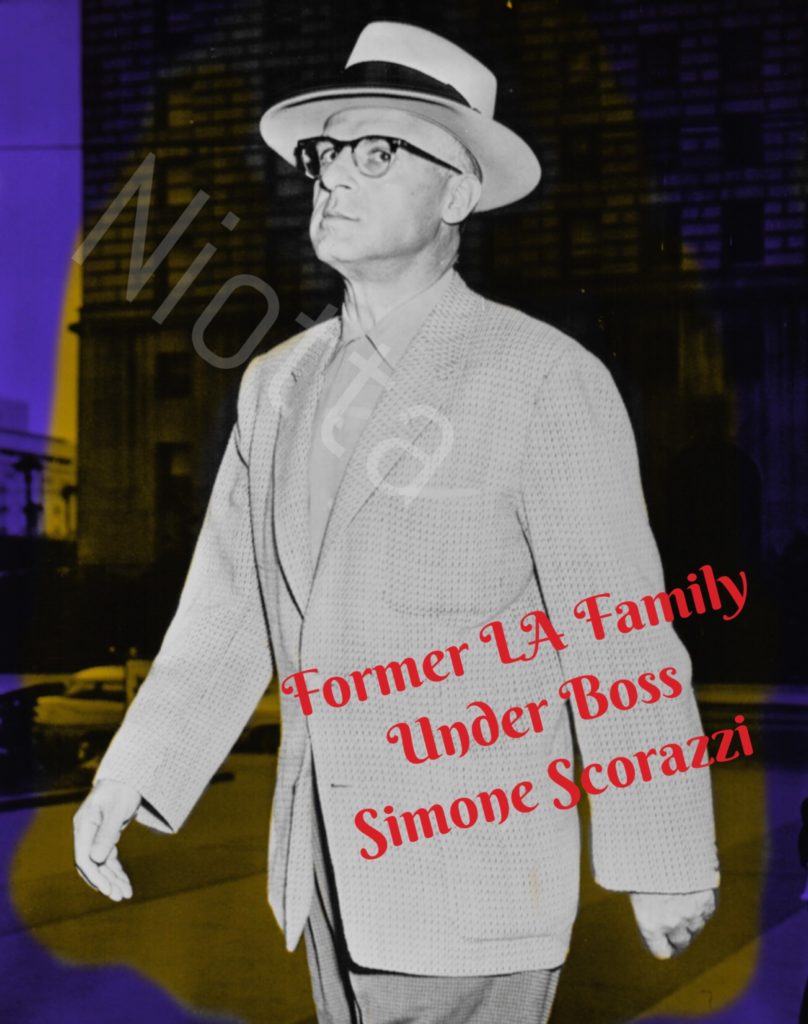
They’d been after him since his arrest at the notorious 1957 Apalachin meeting. It seemed that the other L.A. man marked for expulsion on the Immigration’s black list could not be mentioned by the press without newsmen bringing up his association to Benjamin “Bugsy” Siegel. Reporters even deemed it necessary to highlight his physical proximity to Siegel when a barrage of bullets crashed through a window and took the Jewish mobster’s life. Allen Smiley, Siegel’s former best friend and confidante, now filled a similar role for another Angeleno operator, Johnny Roselli. Smiley’s associations and the less than legitimate circumstances of his arrival in the states made him an easy target. Though Smiley’s deportation had already been ordered, officials were at odds with where to send him. “Canada would not accept him,” and Russia “also refused,” stating “he left prior to the Revolution.”
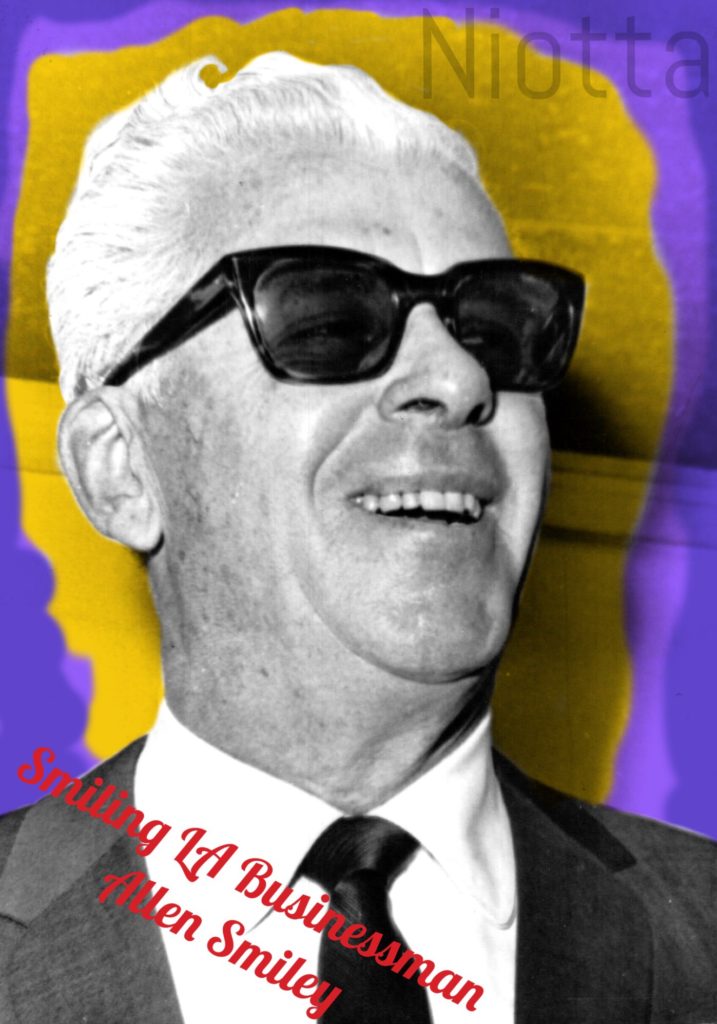
For many facing such a situation, the only shield to protect them came in the form of an attorney who practiced out of Washington D.C.. As a former member of the Board of Immigration Appeals, Jack Wasserman more than just knew immigration law. Judges came to call him “Mr. Immigration.” Throughout the fifties and sixties, Wasserman represented such infamous characters as Carlos Marcello, Tony Accardo, Frank Costello, and just before his passing, Jack Dragna. In the early sixties, the controversial syndicated political journalist, Jack Anderson, described Wasserman as “the complete opposite of the TV stereotype of the fast-talking, unscrupulous underworld mouthpiece.” His background was “impeccable.” Not only did Wasserman shun the public eye, and charge just “one-fifth of what he should,” he was also never known for displaying “the plush trappings that underworld fees are expected to buy.” Creating an almost saintly image of the attorney, Anderson also stated that Wasserman devoted “much time to raising money for Jewish charities” and that his wife was “active” in the local church.
Remarking about the state of immigration law under the McCarran Act, Wasserman explained it was “hardly fair” and that it was obvious that the government was “cutting a few corners” with a “list of certain aliens whom they charge with being criminals.” Going further, he added, “If a man were on such a list, even unfairly, he would have no chance to ask for the evidence that put him there.” Also, just being on “such a list would prevent any board from giving him a fair trial,” as “they would already be prejudiced.” Wasserman’s 1956 publication, “Some Defects in the Administration of our Immigration Laws,” delves deeply into the subject. In this text, he refers to the selective use of the “discretionary powers” of administrative officials as a “national disgrace.”
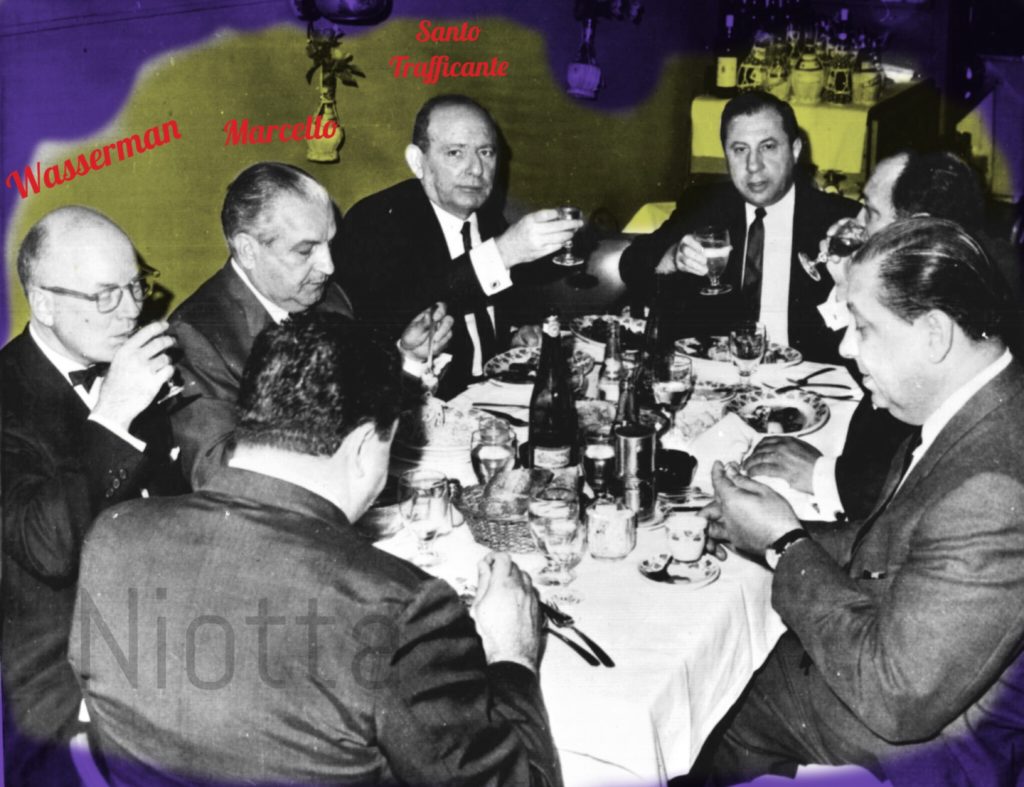
“After a final order of deportation, many aliens are seized and deported without an opportunity to bid farewell to their families, to arrange their affairs, or even seek judicial review. Similarly, discretion is still harshly exercised to deny relief from deportation to aliens with family ties, to the aged, and to the infirm.”
To back such bold claims, Wasserman highlighted several instances. Michael Spinella, “who was kidnapped by our immigration officials while on a visit to Washington, D. C.” was “denied an opportunity to phone his attorney, to seek judicial review of his deportation order, to bid farewell to his family, or to gather his personal belongings prior to his deportation to Italy.” Joseph Accardi “was deported without being afforded an opportunity to see his wife, who was away from home for a few hours,” and “Jack Dragna also was denied an opportunity to see his wife, seriously ill at a hospital prior to her death.” Adding a personal note to Wasserman’s example, federal agents escorted Jack Dragna to the funeral reception of his wife Frances in handcuffs. Though held under armed guard in a family residence, he was forced to wear the restraints during the full duration. Sadly recalling the event, one family member commented that “It added to the sorrow, and the family suffered for it.”
In 1954, roughly two years after implementing the questionable act, the avatar of this immigration weapon lost the good fight. Not long after surviving a heart attack, Patrick Anthony McCarran, a Reno native, former Chief Justice, and four term Nevada Senator, passed away. Although his unconstitutional immigration crusade bolstered an exceedingly negative response, the city of Las Vegas saw fit to name their airport in his honor. Attorney Jack Wasserman, who throughout a career of public service acted as founder, president, and board member of several immigration organizations and committees, continued to advocate for the rights of immigrants until his passing in the summer of 1980. The Jack Wasserman Memorial Award for excellence in litigation in the field of immigration law was established later that same year.
Author’s Note: Dr. J. Michael Niotta, grandson of famed Angeleno, Jack Dragna, is headlining a panel at the upcoming MobWorld Summit at the Las Vegas Fremont District’s Plaza Hotel over Father’s Day weekend, and will be lecturing at the Las Vegas Mob Museum in September of this year.
Visit www.jmichaelniotta.com to learn more about the author and his current projects, and to order his true crime debut, The Los Angeles Sugar Ring.
- The Walnut Bust: The Early Days of Los Angeles With Dr J. Michael Niotta - May 21, 2020
- The Cornero Gang & the Infamous Page Brothers: The Early Days of Los Angeles With Dr J. Michael Niotta - June 4, 2019
- The Man From Chicago: The Early Days of Los Angeles With Dr J. Michael Niotta - December 12, 2018







